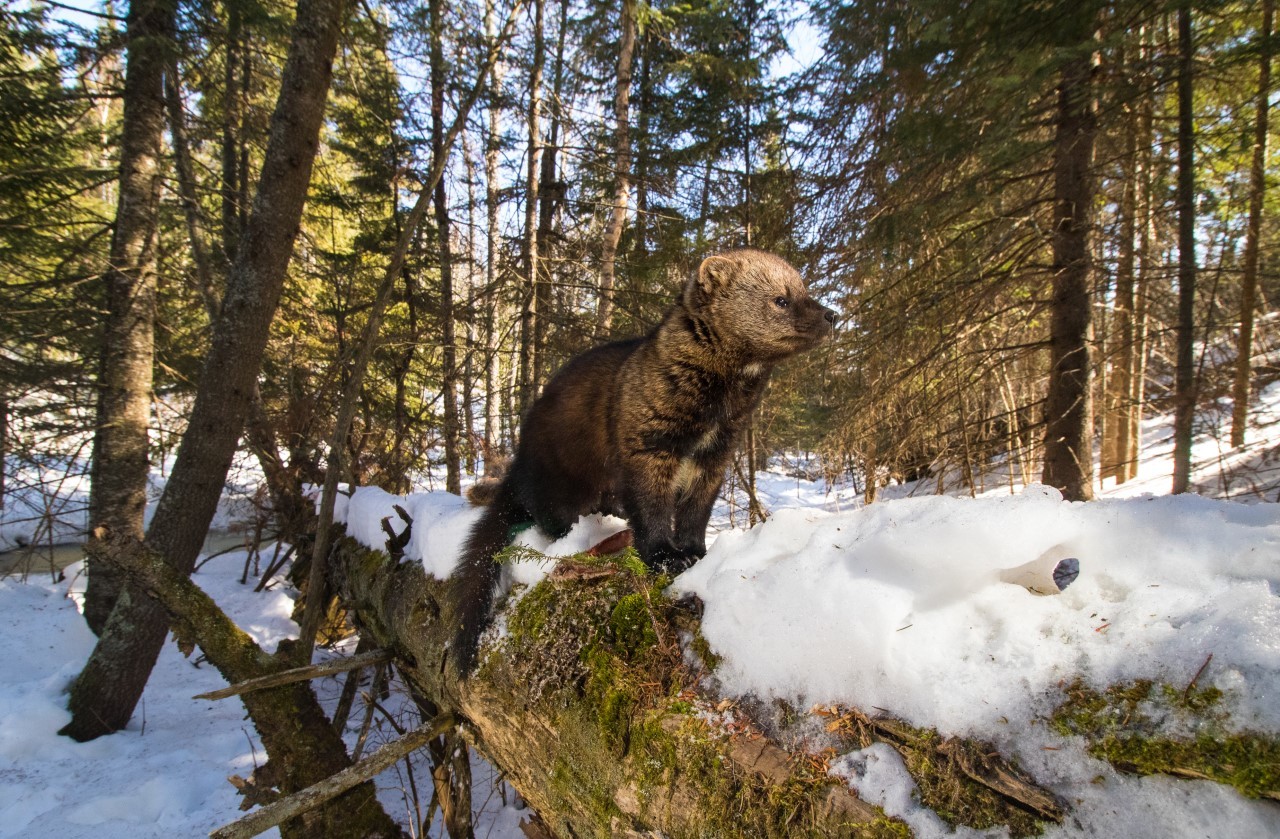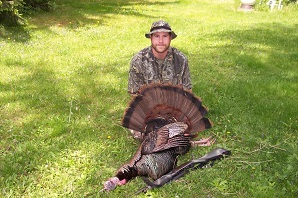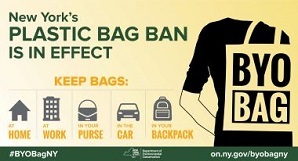Hunting and Trapping Newsletter
The New York State Department of Environmental Conservation sent this bulletin on 09/29/2020 03:44 PM EDT |
| DEC Delivers - Information to keep you connected and informed from the NYS Department of Environmental Conservation |
| Share or view as a web page || Update preferences or unsubscribe |
Hunting and Trapping Newsletter |
In This Issue:
How Deer Affect Your Woods – Free Online PresentationKristi Sullivan, wildlife biologist at Cornell University, will discuss the effects deer are having on New York’s woodlands, and share clues you can use to determine the degree to which deer are affecting a particular forest. Join her to learn how deer browsing affects the health and future of your forest and the plants and animals that live there. Find out how you can use AVID (Assess Vegetation Impacts from Deer), a citizen science method developed by Cornell and DEC, to learn if deer are affecting your woods. This presentation will take place Wednesday, September 30, 2020, 7 p.m. - 8 p.m. You must pre-register. After registering, you will receive a confirmation email containing information about joining the meeting. Epizootic Hemorrhagic Disease in Putnam and Orange County DeerOn September 3, DEC confirmed that several white-tailed deer in the town of Philipstown and villages of Nelsonville and Cold Spring in Putnam County and in the town of Goshen in Orange County died after contracting Epizootic Hemorrhagic Disease (EHD). DEC has since documented additional cases in the areas of western Putnam, eastern Orange, southern Ulster, northeastern Rockland and northwestern Westchester counties. Within those areas, DEC wildlife biologists have received reports of over 450 likely EHD white-tailed deer mortalities from the public. DEC wildlife biologists have collected approximately two dozen deer carcasses from across the affected area and submitted the carcasses and tissue samples to the Wildlife Health Unit for necropsy. EHD is a viral disease of white-tailed deer that cannot be contracted by humans. EHD virus is carried by biting midges, small bugs often called no-see-ums or 'punkies.' Once infected with EHD, deer usually die within 36 hours. The disease is not spread from deer to deer or from deer to humans. The EHD virus was first confirmed in New York in 2007 in Albany, Rensselaer, and Niagara counties, and in Rockland County in 2011. EHD outbreaks are most common in the late summer and early fall when midges are abundant. EHD symptoms include fever, hemorrhage in muscle or organs, or swelling of the head, neck, tongue, and lips. A deer infected with EHD may appear lame or dehydrated. Frequently, infected deer will seek out water sources, and many succumb near a water source. There is no treatment for nor means to prevent EHD. The dead deer do not serve as a source of infection for other animals. EHD outbreaks do not have a significant long-term impact on deer populations. EHD is endemic in the southern states where there are annual outbreaks, so some southern deer have developed immunity. Generally, in the northeast, EHD outbreaks occur sporadically, and deer in New York have no immunity to this virus. Consequently, most EHD-infected deer in New York are expected to die. In the north, the first hard frost kills the midges that transmit the disease, ending the EHD outbreak. At this time, DEC does not have any plans to reduce harvest in areas impacted by EHD. DEC manages deer population on the Wildlife Management Unit (WMU) scale, and the effects of EHD on that level are still uncertain. If, after this season, harvest indices suggest deer populations on the WMU scale are at or below desired levels, DEC may reduce issuing future Deer Management Permits (DMPs) to either stabilize or increase deer populations as necessary. Hunters should not handle or eat any deer that appears sick or acts strangely. Report sightings of sick or dying deer to the nearest DEC Regional Office or to an Environmental Conservation Police Officer. For more information on EHD and helpful related links, visit the DEC website. Fisher and Marten Trapping Permit Applications
Are you planning to trap fisher or marten this fall? If so, please apply for your free permit. A permit is required to trap fisher or marten in any part of NY where the season is open. Applying for a permit is easy! You can email: wildlife@dec.ny.gov with the subject line “Fisher/Marten Permit.” Please include the following information:
You may also contact your Regional Wildlife Office for a permit. If you have already applied for a permit, keep an eye on your mailbox. Regional Wildlife Offices will start mailing permits in early October. Photo: Ryan Pennesi Photography DEC Announces Bowhunting Seasons for Deer and Bear; Youth Big Game Hunt Scheduled for Columbus Day Weekend
Hunters who still need to purchase their license and permits for the 2020-21 seasons can do so at any one of DEC's 1,200 license issuing outlets, by phone at 1-86-NY-DECALS (866-933-2257), or online through our DECALS website. Youth Big Game Hunt New York's annual Youth Big Game Hunt is scheduled for Columbus Day weekend, Oct. 10-12, 2020. During this special opportunity, licensed 14 and 15-year-olds may use a firearm to hunt big game while accompanied by an experienced, licensed adult hunter. All eligible junior hunters may take one deer (either sex) and one bear. During the youth hunt, antlerless deer taken with a firearm may be tagged with a regular season tag, DMP, or Deer Management Assistance Program tag. Antlered deer may only be tagged with the regular season tag. Though junior hunters may have multiple deer tags, they may only take one deer with a firearm during the Youth Big Game Hunt. The Youth Big Game Hunt takes place throughout the state, except in Suffolk County and in bowhunting-only areas. Additional rules that apply to junior hunters and their adult mentors are noted on pages 36 and 37 of the Hunting & Trapping Guide or through the Junior Hunter Mentoring Program. Take it, Tag it, Report it! DEC reminds hunters of the importance of reporting their harvest. Harvest reporting is critical to wildlife management, and hunters are required by law to report their harvest of deer, bear, and turkey within seven days of taking the animal. You can report your harvest online through our DECALS website or by phone at 866-426-3778. You may also report via DEC's HuntFishNY mobile app. Through this mobile app, hunters, anglers, and trappers can access an electronic version of their licenses and privileges, and report the harvest of deer, bear, and turkey immediately while afield on their mobile device. New users of the HuntFishNY App need to download the newest version and use the new login created through the new DECALS licensing system. While hunters may still use the phone report system, the online and mobile systems are faster, more convenient, and easier for hunters to accurately enter information. Venison Donation Program Hunters can help feed the hungry by making a monetary contribution to the Venison Donation Program at any license-issuing outlet. License buyers should inform the sales agent if they are interested in donating $1 or more to support the program. Since 1999, these funds have been used by the Venison Donation Coalition to process more than 6,700 tons of highly nutritious venison, the equivalent of 5.3 million meals served. Learn more about the Venison Donation Coalition program. Stop the Spread of Chronic Wasting Disease Chronic Wasting Disease (CWD) is always fatal to deer. If introduced to New York, CWD could spread rapidly and is difficult to eliminate once established, threatening the future of New York's deer population, hunting tradition, and many of the other benefits associated with deer. The most effective strategy is to prevent CWD from entering New York. Hunters can help protect New York's deer herd from CWD by following these tips:
DEC believes every hunting-related shooting incident is preventable. DEC Commissioner Basil Seggos encourages hunters to Hunt Safe, Hunt Smart and to remember what they were taught in their DEC Hunter Education Course:
DEC also encourages all hunters to wear blaze orange or blaze pink to make themselves more visible to other hunters. Hunters who wear blaze orange are seven times less likely to be shot. When hunting in tree stands, use a full-body harness and lifeline. Most tree stand accidents occur when hunters are climbing in and out of the stand, so use a harness and lifeline to stay connected from the time you leave the ground to the time you get back down. For more information about getting outdoors safely and responsibly during the State's response to COVID-19, visit DEC's Website. Photo credit: Scott Stoner DEC Announces Oct. 1 Start of Small Game Hunting SeasonsNew Opportunities Designated for Active-Duty Military and Veterans to Go Waterfowl Hunting this Fall
Several special youth-only hunting seasons for pheasants and waterfowl occur prior to the start of the regular season. Season dates, bag limits, and other hunting regulations for New York's small game species are available in the Hunting and Trapping Regulations Guide, which can be obtained from a license-issuing agent or on DEC's website. Special Waterfowl Hunting Opportunities for Youth and Active-Duty Military While statistics show hunting in New York is safer than ever, mistakes are made every year. DEC believes every hunting-related shooting incident is preventable, and Commissioner Seggos is encouraging hunters to use common sense this season and to remember what they were taught in their DEC Hunters Education Course. For more information, view the entire news release on DEC's website. DEC Announces Enforcement of New York's Plastic Bag Ban to Start Oct. 19, 2020
Pursuant to an Order of the New York State Supreme Court, Albany County, DEC agreed to provide the parties and the Court at least 30 days' notice prior to commencing enforcement. DEC is currently conducting extensive outreach to stakeholders, including grocery stores, retailers, and others, to provide notice of the start of enforcement and answer questions. DEC continues to encourage New Yorkers to use reusable bags wherever and whenever they shop with the #BYOBagNY campaign, launched earlier this year. Additional information about exemptions to the plastic bag ban, frequently asked questions, and posters, flyers, and tip strips to download, as well as tips for keeping reusable bags clean are available on DEC's website. New Yorkers use an estimated 23 billion plastic bags annually—each for about 12 minutes—and approximately 85 percent of this staggering total ends up in landfills, recycling machines, waterways, and streets. In March 2017, Governor Cuomo created the New York State Plastic Bag Task Force, chaired by DEC Commissioner Seggos. The task force met several times to develop a uniform, comprehensive, and equitable solution to the challenge of plastic bag waste. The final report analyzed the impacts of single-use plastic bags and provided options for legislation that could help develop a statewide solution. In addition, following passage of the New York State Plastic Bag Waste Reduction Act, DEC held a series of meetings with industry stakeholders across the state to invite input from the public and guide the agency's development of rules and regulations to implement the law. For more information about the plastic bag ban, reusable bags, or to file a complaint about entities using single-use plastic carryout bags, visit DEC’s website, email plasticbags@dec.ny.gov, or call (518) 402-8706. |


 Bowhunting seasons for deer and bear began in the Northern Zone on Sept. 27, and in the Southern Zone will begin on Oct. 1. Hunters are also reminded to apply for Deer Management Permits (DMPs/antlerless tags) by the Oct. 1, 2020 deadline. Hunters should know the Wildlife Management Unit (WMU) they intend to hunt and review their
Bowhunting seasons for deer and bear began in the Northern Zone on Sept. 27, and in the Southern Zone will begin on Oct. 1. Hunters are also reminded to apply for Deer Management Permits (DMPs/antlerless tags) by the Oct. 1, 2020 deadline. Hunters should know the Wildlife Management Unit (WMU) they intend to hunt and review their  Several small game hunting seasons open Oct. 1 across New York State, including special youth hunts and new hunting opportunities for active-duty military members and veterans.
Several small game hunting seasons open Oct. 1 across New York State, including special youth hunts and new hunting opportunities for active-duty military members and veterans.